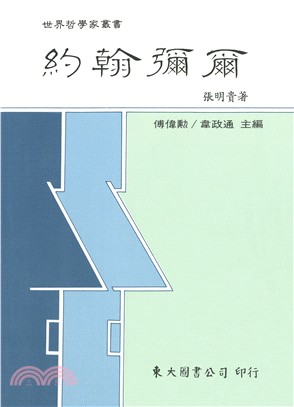定 價:NT$ 880 元
優惠價:79 折 695 元
領券後再享88折
領
團購優惠券A
8本以上且滿1500元
再享89折,單本省下76元
再享89折,單本省下76元
領
無庫存,下單後進貨(採購期約45個工作天)
可得紅利積點:20 點
相關商品
商品簡介
作者簡介
名人/編輯推薦
商品簡介
Colonial powers in China and northern Vietnam employed the built environment for many purposes: as an expression of imperial aspirations, a manifestation of supremacy, a mission to civilize, a re-creation of a home away from home, or simply as a place to live and work. In this volume, scholars of city planning, architecture, and Asian and imperial history provide a detailed analysis of how colonization worked on different levels, and how it was expressed in stone, iron, and concrete. The process of creating the colonial built environment was multilayered and unpredictable. This book uncovers the regional diversity of the colonial built form found from Harbin to Hanoi, varied experiences of the foreign powers in Asia, flexible interactions between the colonizers and the colonized, and the risks entailed in building and living in these colonies and treaty ports.
作者簡介
Laura Victoir is a former postdoctoral fellow in European Studies at the University of Hong Kong. She currently teaches in the History Department at Hunter College, City University of New York, specializing in Imperial Russia and in French colonialism in Asia.
Victor Zatsepine is a research assistant professor of history at the University of Hong Kong. He holds degrees from Beijing Language and Culture University, Harvard and the University of British Columbia, and specializes in China’s frontier history and the history of Sino-Russian encounters.
Victor Zatsepine is a research assistant professor of history at the University of Hong Kong. He holds degrees from Beijing Language and Culture University, Harvard and the University of British Columbia, and specializes in China’s frontier history and the history of Sino-Russian encounters.
名人/編輯推薦
"This volume tells a complex story of conflict, collaboration and co-habitation between actors involved in the unevenness of colonial cities. Central to the volume is architecture and urban form seen as both the text and context for the enactment of power, negotiation and resistance. The contributors have done an excellent job in delivering an interpretive framework that understands colonial cities as a specific site of contestation and identity formation for both the colonizer and the colonized." — Abidin Kusno, the University of British Columbia
"This well-conceived and truly interdisciplinary volume is a welcome addition to the existing historiography on the colonial built environment in Asia. As the editors note, a focus on the colonial built environment 'exposes multiple-layers of empire-making and of conquest, both ideological and real.'
Shared connections within this fairly concentrated, compact region with easy access to the sea, as well as differences such as variations in topography and climate the colonizers confronted, are succinctly stated. The book's regional focus reveals the multiple imperial incursions and processes of colonization by various imperial powers, and the point of revising narratives over-emphasizing the role of the British empire is well taken." — Haejeong Hazel Hahn, Seattle University
"Harbin to Hanoi is an important cross-disciplinary contribution to the analysis of the built environment in the context of colonial and imperial history in Asia from 1840 to 1940. The editors have collected an impressive collection of essays that provide novel insights into the multiple and varied interaction of colonial powers from Europe and Japan notably in China and northern Indochina. The authors illustrate the diverse actors of colonization both global and local and their impact on built form in different historical context and diverse geographical areas inviting a re-evaluation of the relationship between what is often called the 'colonizer' and the 'colonized'." — Carola Hein, Bryn Mawr College
"This well-conceived and truly interdisciplinary volume is a welcome addition to the existing historiography on the colonial built environment in Asia. As the editors note, a focus on the colonial built environment 'exposes multiple-layers of empire-making and of conquest, both ideological and real.'
Shared connections within this fairly concentrated, compact region with easy access to the sea, as well as differences such as variations in topography and climate the colonizers confronted, are succinctly stated. The book's regional focus reveals the multiple imperial incursions and processes of colonization by various imperial powers, and the point of revising narratives over-emphasizing the role of the British empire is well taken." — Haejeong Hazel Hahn, Seattle University
"Harbin to Hanoi is an important cross-disciplinary contribution to the analysis of the built environment in the context of colonial and imperial history in Asia from 1840 to 1940. The editors have collected an impressive collection of essays that provide novel insights into the multiple and varied interaction of colonial powers from Europe and Japan notably in China and northern Indochina. The authors illustrate the diverse actors of colonization both global and local and their impact on built form in different historical context and diverse geographical areas inviting a re-evaluation of the relationship between what is often called the 'colonizer' and the 'colonized'." — Carola Hein, Bryn Mawr College
主題書展
更多主題書展
更多書展本週66折
您曾經瀏覽過的商品
購物須知
為了保護您的權益,「三民網路書店」提供會員七日商品鑑賞期(收到商品為起始日)。
若要辦理退貨,請在商品鑑賞期內寄回,且商品必須是全新狀態與完整包裝(商品、附件、發票、隨貨贈品等)否則恕不接受退貨。

























